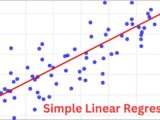Machine Learning in Independent Vehicles: Exploring Challenges and Developments
May 4, 2024Independent vehicles speak to a transformative innovation balanced to reshape transportation frameworks around the world. At the heart of these vehicles lies machine learning, empowering them to see their environment, make choices, and explore securely. In this article, we dig into the challenges confronting the integration of machine learning in independent vehicles and investigate inventive arrangements driving this field forward.
Challenges:
Security and Unwavering quality:
Guaranteeing the security and unwavering quality of independent vehicles is foremost. Machine learning calculations must precisely decipher complex and energetic situations, minimizing the chance of mischances.
Strength to Instability:
Real-world conditions can be erratic, with components like climate, street conditions, and human behavior presenting instability. Independent vehicles must display strength to these instabilities to function securely.
Information Quality and Amount:
Machine learning models require endless sums of high-quality information for preparing and approval. Getting labeled datasets that envelop different driving scenarios remains a critical challenge.
Real-time Choice Making:
Independent vehicles must make split-second choices in reaction to changing conditions. Adjusting computational complexity with real-time necessities could be a challenge, particularly for profound learning models.
Administrative and Moral Contemplations:
Administrative systems overseeing independent vehicles are still advancing. Tending to moral situations, such as ethical decision-making in potential mishap scenarios,
includes complexity to arrangement.
Advancements:
Sensor Combination:
Joining information from numerous sensors, counting LiDAR, radar, cameras, and ultrasonic sensors, improves discernment capabilities and moves forward strength to natural changeability.
End-to-End Learning:
End-to-end learning approaches straightforwardly outline sensor inputs to vehicle activities, bypassing middle of the road preparing steps. This streamlines the learning handle and empowers the revelation of complex, non-linear mappings.
Reenactment and Virtual Testing:
Recreation situations give a secure and versatile stage for preparing and testing
independent vehicle algorithms. Manufactured information era and support learning in reenactment quicken learning and encourage strength testing.
Reasonable AI (XAI):
XAI strategies improve the interpretability of machine learning models, empowering partners to get it the thinking behind independent vehicle choices. This cultivates believe and helps in administrative compliance.
Edge Computing:
Conveying machine learning calculations specifically on vehicle equipment decreases inactivity and transfer speed requirements by processing information locally. Edge computing empowers real-time decision-making whereas improving protection and security.
Conclusion:
Machine learning plays a essential part in progressing independent vehicle innovation, advertising the potential to revolutionize transportation frameworks. In spite of confronting critical challenges, imaginative arrangements are developing to address security, unwavering quality, and administrative concerns. By exploring these challenges and grasping development, the vision of completely independent vehicles exploring our streets securely and productively draws closer to reality.


